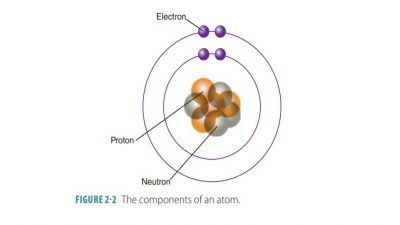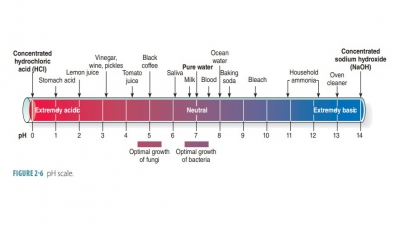Chemical Reactions
| Home | | Anatomy and Physiology | | Anatomy and Physiology Health Education (APHE) |Chapter: Anatomy and Physiology for Health Professionals: Levels of Organization : Chemical Basics of Life
1. Describe four kinds of chemical reactions. 2. What are the structural formulas for synthesis reactions and exchange reactions? 3. Explain decomposition reactions.
Chemical
Reactions
A chemical
reaction occurs when a chemical bond is
formed, broken, or rearranged. Chemical reactions are written using symbols,
which are known as chemi-cal equations.
Any number that is written in a smallerletter that appears below the level of
the main text (a subscript) indicates the atoms are joined by chem-ical bonds.
A number written as a prefix shows the number of unjoined atoms or molecules.
For example, for H2O, the number “2” indicates that two hydrogen
atoms are bonded together with one oxygen atom to form the water molecule. If
an equation used the term “2H,” it would mean there were two unjoined hydro-gen
atoms. A chemical equation contains the kinds and number of reacting substances
(reactants), the chemical composition of the results (products), and, if the equation is balanced,
the relative proportion of each reactant and each product. Four types of
chemical reactions are important to the study of physiology: synthesis,
decomposition, exchange, and reversible.
Synthesis Reactions
Chemical reactions change the
bonds between atoms, molecules, and ions to generate new chemical
com-binations. Synthesis is a reaction that occurs when two or more reactants (atoms) bond to
form a more complex product or structure. The formation of water from hydrogen
and oxygen molecules is a synthesis reaction. Synthesis always involves the
formation of new chemical bonds, whether the reactants are atoms or molecules.
Synthesis requires energy, important for growth and repair of tissues.
Synthesis is symbol-ized as: A + B → AB.
Decomposition Reactions
Decomposition
is a reaction that occurs when
bondswithin a reactant molecule break, forming simpler atoms, molecules, or
ions. For example, a typical meal contains molecules of sugars, proteins, and
fats that are too large and too complex to be absorbed and used by the body.
Decomposition reactions in the digestive tract break these molecules down into
smaller frag-ments before absorption begins. Decomposition is symbolized as: AB
→ A + B.
Exchange Reactions
In an exchange
reaction, parts of the reacting
mol-ecules are shuffled around to produce new products. For example, an
exchange reaction is the reaction of an acid with a base, which forms water and
a salt. Exchange reactions are symbolized as: AB + CD → AD + CB.
Reversible Reactions
A reversible
reaction is one where the products of the
reaction can change back into the reactants they originally were. These
reactions can proceed in oppo-site directions, depending on the relative
proportions of reactants and products as well as how much energy is available.
So, if A + B → AB, then AB → A + B. Many
important biological reactions are freely reversible. Such reactions can be
represented as the equation A+B→AB.
1. Describe
four kinds of chemical reactions.
2. What
are the structural formulas for synthesis reactions and exchange reactions?
3. Explain
decomposition reactions.


